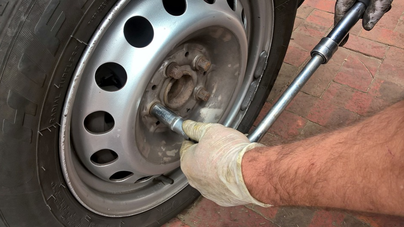Morris Tires: Your Companion for Professional GMC Tires Service
Morris Tires: Your Companion for Professional GMC Tires Service
Blog Article
Tire Solution: The Impact of Weather
When it involves making certain optimal efficiency and safety when driving, understanding the effect of climate problems on tire solution is crucial. From scorching heat to icy roads, each weather condition aspect can significantly influence tire functionality and general driving experience. By delving into the effects of differing climate condition on tires, motorists can get important insights that might boost their vehicle's efficiency and durability. In this conversation, we will certainly check out the elaborate relationship between weather conditions and tire solution, dropping light on the importance of weather-specific tire maintenance methods and factors to consider.
Warmth and Tire Performance
When exposed to high temperatures, tires experience modifications in efficiency that can dramatically influence vehicle safety and security and handling. The heat created from extended driving or warm weather condition conditions creates the tire rubber to soften, leading to lowered step life and increased wear.

Winter Results
Cold climate conditions can have a substantial effect on tire performance and security. In chilly weather, tires may additionally shed air pressure extra rapidly, which can influence managing and gas performance.
To minimize the impacts of winter on tires, it is crucial to consistently check tire pressure and inflate them to the maker's suggested degrees. Utilizing winter or all-season tires created for cold weather condition problems can also enhance grip and grip on icy or snowy roadways. Appropriate tire maintenance, including regular evaluations for wear and damage, ends up being a lot more critical during cooler months to make certain ideal efficiency and safety.
Rainy Issues Effect
Tires with worn-out treads are more vulnerable to hydroplaning, where a layer of water develops up between the tire and the road surface, leading to loss of grip. To combat this, vehicle drivers must regularly examine their tires for sufficient step deepness and consider investing in tires particularly made for wet problems.
Additionally, wet weather can additionally reduce presence, making it testing for chauffeurs to see the road in advance clearly (GMC Tire Service). In such conditions, it is vital to readjust driving rates as necessary and keep a risk-free following distance to permit abrupt stops. Appropriately filled with air tires can also aid in preserving control on damp roads by providing much better handling and grip
Snow and Tire Safety And Security
Snow-covered roadways present distinct difficulties for motorists, emphasizing the significance of appropriate tire option and upkeep. When driving in snowy conditions, view publisher site having the best tires can make a considerable distinction in safety and security and efficiency. Winter months tires are developed with special rubber substances and tread patterns to offer much better traction on snow and ice compared to all-season tires. The deeper treads and sipes of winter months tires help grip the road much better, decreasing the danger of sliding and gliding.

In addition, motorists need to take into consideration mounting tire chains in severe snowy conditions. Tire chains supply added traction by gripping the snow and ice, enhancing stability and control. However, it is necessary to adhere to supplier directions when mounting and using tire chains to stop damage to the tires and automobile. By choosing the ideal tires, preserving correct rising cost of living, and taking into consideration additional grip help like tire chains, motorists can enhance their safety when browsing snow-covered roadways.
Weather-Related Tire Maintenance
When confronted with different climate condition, appropriate tire upkeep ends up being an essential element of lorry security and efficiency. Weather-related tire maintenance includes a variety of methods focused on making certain optimal tire function and longevity in different climate Source situations. One vital facet of weather-related tire maintenance is tire stress regulation. Rising and fall temperature levels can trigger tire stress to differ, impacting grip and gas performance. Regularly adjusting and examining tire pressure according to producer suggestions is crucial for secure driving in transforming weather problems. In addition, tire walk important source deepness plays a substantial role in taking care of different climate components. Tires with ample step depth supply better hold on wet or icy roads, minimizing the danger of skidding or hydroplaning. Inspecting tire step frequently and replacing tires when tread wear gets to a certain depth is essential for maintaining grip and security in negative weather condition. By focusing on weather-related tire upkeep, drivers can enhance safety and security, improve lorry performance, and extend the life expectancy of their tires.
Conclusion
In final thought, weather condition problems have a considerable influence on tire efficiency and security. From warm impacting tire pressure and use to cool climate minimizing traction, it is vital to think about the weather when keeping and using tires.
In this conversation, we will certainly discover the complex partnership between climate conditions and tire solution, shedding light on the importance of weather-specific tire maintenance methods and considerations.

Report this page